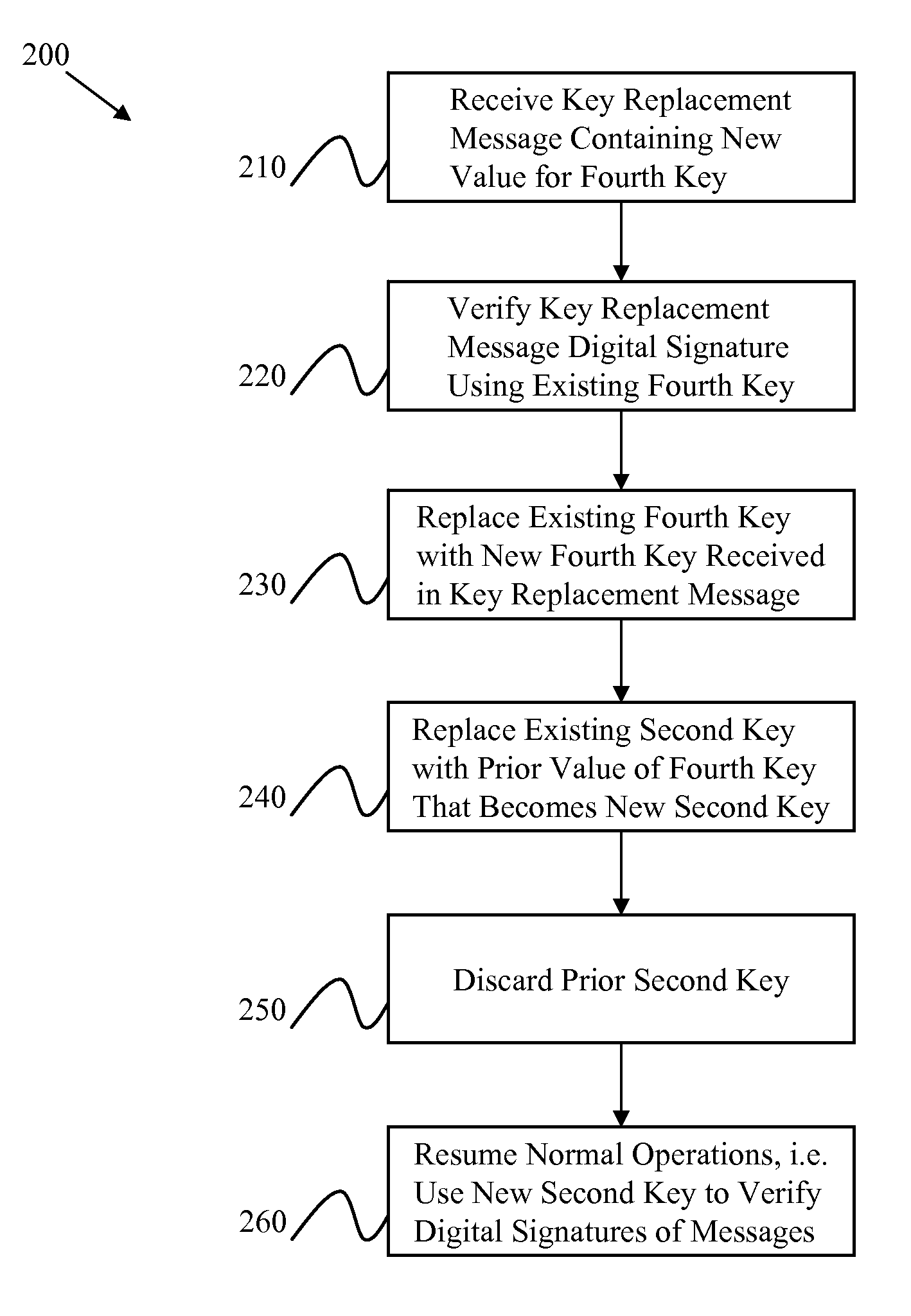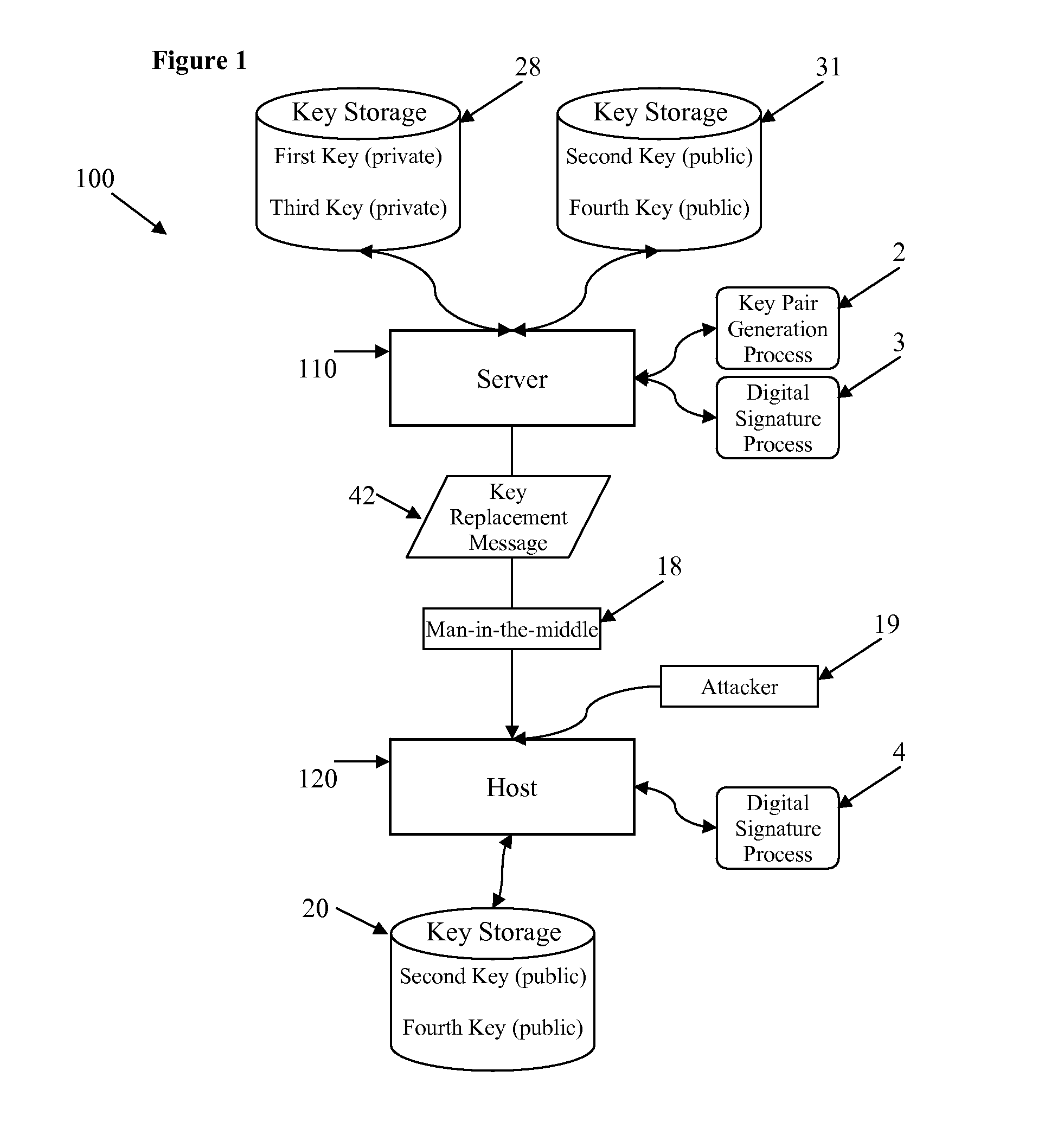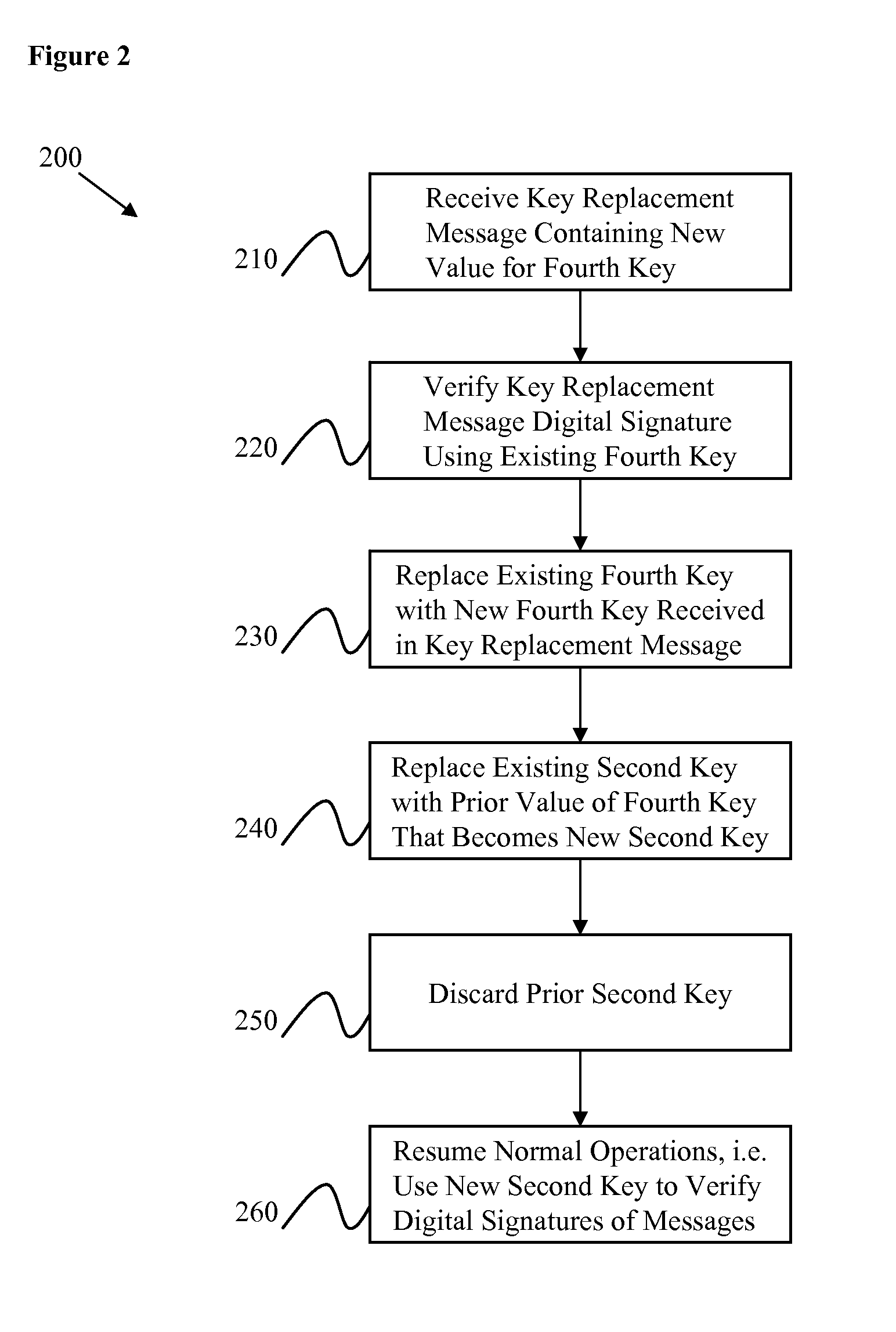To further complicate the search for a precise definition, the
information security field routinely points out that definitions used by both cryptographers and engineers are foolish or simply wrong because prior art devices and methods that exist in the real world to create, transmit, and verify digital signatures are vulnerable in subtle ways that spoil cryptographers' and engineers' idealistic
viewpoints on the subject.
Most
digital signature schemes only ensure a degree of probability, they don't conclusively prove that a particular message was transformed using a particular key.
We say that digital signatures are easy for parties who hold the appropriate keys to create and verify, even though the algorithms are often complex, because it is considered very hard for an
adversary to discover the keys by analyzing the output of cryptographic transformations that utilize the keys, and because it is
extremely hard for a party who lacks the keys to ever create or verify digital signatures.
It's easy with the keys but very hard without them.
This reasoning makes some sense for slow or limited-capacity systems, but is similar to faulty reasoning that resulted in the Y2K bug.
In many current systems, however, the use of one-way hash functions makes it possible to
forge digital signatures in a variety of ways that would not be possible if the entire message were simply encrypted using the first key.
Current systems suffer from a common security flaw resulting from the practical risk of private key theft and problems associated with the process of issuing replacement keys to end-users when a private key is compromised.
Popular belief is that such cryptanalytical discovery is improbable as a result of the cryptographic key strength of the asymmetric cryptosystems involved in digital signatures or asymmetric
encryption.
However, new methods are constantly emerging that make it increasingly likely that private keys can be discovered through
cryptanalysis alone, without requiring an
adversary to intercept all or part of any secret, or to find a way to steal the private key itself.
Private keys can also be lost or become inaccessible due to loss of another key required for decryption of a stored private key.
Equipment failures, natural disasters, acts of war or sabotage, and all manner of other practical physical threats to
information security can equally deprive the owner of an asymmetric key pair of the ability to use a particular trusted private key to compute new digital signatures, or remove the ability to decrypt information that has been encrypted using the corresponding public key.
Redundant storage of multiply-keyed
ciphertext data eliminates a
single point of failure that loss of a decryption key otherwise represents, but existing solutions for mitigating risk of
data loss do not also solve the more serious security problems that are created when certain trusted public / private key pairs used in
digital signature systems, such as so-called root keys, are lost or stolen and need to be replaced.
A key owner may unwittingly facilitate further security breaches within systems that require trusted key replacement if the key owner fails to recognize the fact that a stolen private key enables an attacker to
forge a digital signature that appears valid, either automatically inside any
system that still trusts the stolen key, or by practical implication by virtue of flawed human decisions during end-users' efforts to install a replacement key at the request of a malicious third-party who impersonates the true
key holder.
Furthermore, serious forensic difficulties can emerge, such as being unable to distinguish tampering from authentic changes made to data, while investigating circumstances where data tampering may have occurred as a result of an attacker's ability to
forge digital signatures, substitute malicious replacement keys, or deposit malicious
ciphertext into a data storage whose integrity depends primarily on secrecy of a key that has been compromised.
In practice, the
system discussed by Lewis results in digital signatures that either cannot be created at all, in the case where the private key that corresponds to the public key that is being replaced has been lost or destroyed due to a disaster or other event, or digital signatures that cannot be verified by any recipient that lacks knowledge of the replacement private key due to illogical requirements of a Lewis
system.
Furthermore, Lewis teaches that the private key must also be sent in key replacement messages, which is illogical because sending the private key to any other party, even one that is participating in the cryptographic system, defeats the purpose of the digital signature scheme by disclosing the key that normally is kept secret in order for digital signatures to have their intended meaning.
Disclosing a private key is also illogical because eavesdroppers or intruders will potentially intercept the key.
Of particular concern is a defect in the design of the Lewis invention that results from failing to address an
information security threat to which the Lewis invention is vulnerable.
The nature of this information security
vulnerability is such that it is a relatively common byproduct of poorly-understood
cryptography implemented by
software engineers.
Accurate computations may still result in a meaningless result, as in the case where a logical error is introduced by a
programmer, but incorrect results that come from
programming mistakes cannot be blamed on mathematics, those mistakes are
human error.
D. In the case of masking with
encryption, when a key replacement message is received by a user node a decryption key is supplied within the message and a catastrophic mistake is made by the system.
E. As a result it is clear that the masking taught by Lewis for handling of R1pu simply stinks.
The key replacement messages taught by Lewis are inherently unsafe, as they don't provide the protection against attacks by unauthorized parties who compromise the active private key the way Lewis intended.
Among other drawbacks of the Lewis apparatus is the fact that an
adversary who has obtained the active private key is capable of
forging a verifiable key replacement message that supplies a chosen replacement public key that is different from the authentic replacement public key that was previously masked as taught by Lewis.
However, when we're dealing with a cryptographic system that transforms messages of arbitrary length into hash codes of
fixed length we're dealing with seemingly-infinite numbers of possible combinations of bit sequences being condensed down to bit sequences that themselves have an enormous number of possible values.
Alternatively, the adversary may discover a classical information security
vulnerability of the sort that allows the adversary to overflow a stack or a heap buffer, for example, and force the execution of arbitrary code within a
microprocessor that is being used in the system to verify digital signatures.
Such exploitation of classical information security vulnerabilities can result in the forced replacement of key values with keys of the attacker's choosing, or allow the attacker to tamper with potentially any other data stored anywhere within the system.
Hundreds of bits makes for an enormous number of possibilities, but when messages are thousands or tens of thousands or hundreds of thousands of bits in length it is obvious that the number of hash collisions that must exist in reality are very large.
When considering these issues in light of the Lewis invention, however, the existence of millions of billions of hash collisions given a typical digital signature scheme becomes a critical
vulnerability for the Lewis key replacement
message integrity.
Even in the case where an engineer who implements the Lewis invention is careful to ensure that the hash code supplied previously matches the hash code of the replacement key (when that replacement key is actually received by way of a Lewis key replacement message) there is still no way for such engineer to know whether the hash code matches because the replacement key is the authentic replacement key, or whether the hash code matches because of a hash collision that was discovered by an adversary.
The difficulty for an adversary of finding a hash collision for a structured message plus a random cryptographic key, where the structure of the message and its required command string remain unchanged, yet the random cryptographic key is altered so that is has a different value, is considered by cryptologists to be nearly impossible in practice.
However, Lewis makes no mention of any of these common
engineering challenges for the practical implementation of digital signatures and it is clear that the invention taught by Lewis cannot be safely implemented without a substantial amount of additional work and countermeasures to defend against peculiar hidden risks inherent to the Lewis system.
In the case where the previously-stored
mask is a hash code rather than an encrypted copy of the next replacement public key, the engineer who implements the Lewis apparatus must go beyond the Lewis teachings and explicitly confirm that the previously-stored
mask indeed matches a newly-computed
mask using the same hash
algorithm taking the
plaintext of the full replacement public key as input to the hash
algorithm, yet even when doing so such engineer will not necessarily succeed in preventing all possible hash collisions or other vulnerabilities inherent to such a hash-based mask
verification.
 Login to View More
Login to View More  Login to View More
Login to View More 


